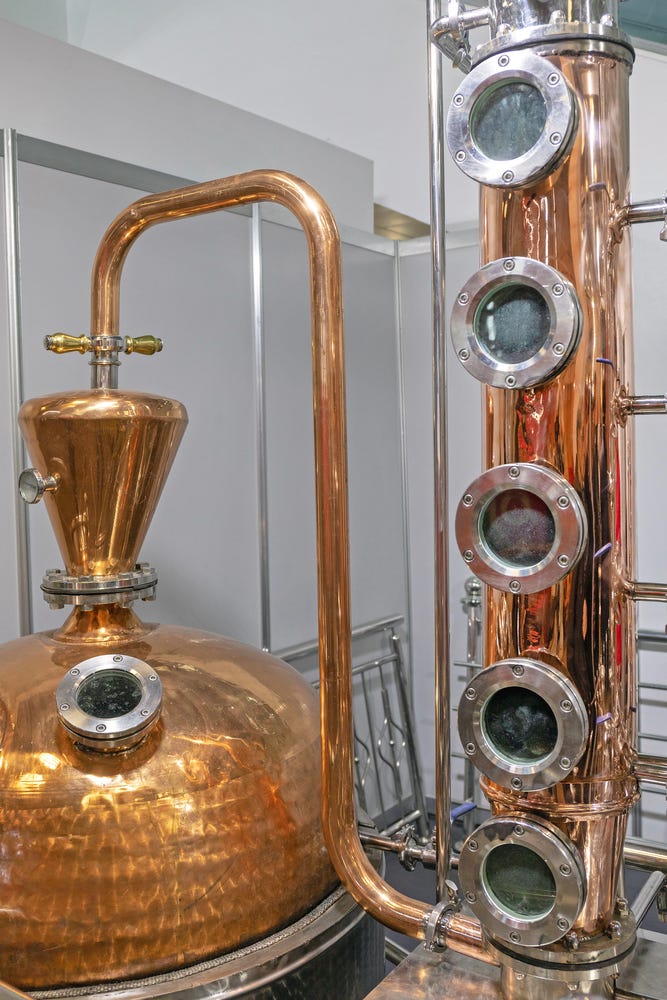New Year. New Posts!
Did you miss me the last couple of weeks? Cool. Cool. (either way)
Now that it’s January I have to get back in the saddle as it were, and bring my education/entertainment combo ‘stacks for your edification (and entertainment) on the Friday regular so
here..
we…
Go!
Ahem.
Takes a moment to shoot the sleeves of my sweatshirt…
then to take a sip of water…
then to log the sip of water so as to get credit for it somewhere…
then to check email…
then to empty junk inboxes…
then to scroll one of the socials hoping someone has discovered how great my books are and I’ve gone viral…
alas…not yet.
Ok, ok I’m stalling, sorry.
Not sorry.
*cracks knuckles* (why is it so hard to get going on something at 2 p.m. in the afternoon? Sheesh. I need some caffeine I’ll BRB.)
Here we go. For reals, this time.
ABV = “Alcohol By Volume”
It is the basic measurement of how drunk something is going to make you based on how much you drink it, in how short of a time, in what way, and based on your height, weight, food consumption and basic tolerance.
It’s science, really.
I’m interested in it in the same way I am interested in, say, the chemistry behind why ibuprofen helps me when acetaminophen does not.
Well, actually…it’s because I got into an argument discussion with a family member over the holidays about “proof” vs. “ABV” and why they are NOT the same thing. I thought to myself at the time, “Liz, this is a perfect subject for a Dry January Substack. Teach your acolytes (all 40 something of you anyway) WHY all those numbers on the label of the bottles matter.” So here we are.
Anyways, to wit.
Alcohol by volume (ABV) is the total amount of pure alcohol present in a specific amount of liquid. Or to put it more nerdily, "Alcohol by Volume," is a scientific measurement that indicates the percentage of pure alcohol (ethanol) present in a given volume of an alcoholic beverage, essentially telling you how much alcohol is contained within a specific volume of a drink, expressed as a percentage; meaning if a beverage has a 5% ABV, 5% of its total volume is pure alcohol.
The best way to get this is to get how alcoholic bevvies are produced.
Let’s pick one.
Vodka.
This is one of the simpler ones as it does not require aging like whiskey, bourbon, or rum. Same thing for gin but vodka is slightly more straightforward so…
You start with a fermentable base. Something that can be cooked down to create sugar. In traditional vodka belt countries (Russia, Poland, Finland) this is typically potatoes. But really, anything goes for this particular booze—rye, corn, sorghum wheat, even grapes, whatever. Yeast is combined with the distillable food product and water during the heating/cooking process. The “mash” is produced with the yeast in place, in other words.
The cooked end product is then stored for a period of time, specified by whatever the distiller prefers but usually one to two weeks. The resulting liquid (a.k.a. ethanol) is separated from the solid stuff, and then distilled.
Distillation is the process all booze makers use to heat and vaporize, then recapture the vapor as it becomes liquid again. Most large production outfits use a column distiller, but if you’re making it at home, you use a pot. More on this in a more historical ‘stack soon!
Kind of a cool process, this part. Some vodka makers do this once, some multiple times. But you can’t just take all that reconstructed liquid and pour it into a bottle. Ethanol (the stuff being distilled) changes during the distillation process. The first bit (35%) that results can be toxic enough for you to use it to remove fingernail polish (acetone) so it’s best to, you know, avoid drinking that. The middle part (30%) is the good stuff. The end bit is usually not included in a bottle but will sometimes be saved for re-distillation—unlike the fingernail polish remover from the beginning of the process.
The distillation stage is when botanicals are usually added, if flavor is desired. Not sure what “botanical” gives you “cotton candy vodka” but I am not judging, I swear.
There are names for these different parts: “foreshots” or “heads” for the bad stuff. “Hearts” for the middle, drinkable bit. “Tails” (naturally) for the end of the distillation liquid. You know, we gotta put names on everything.
The “heart” of the reformulated liquid from vapor from ethanol from potatoes, water, and yeast is then filtered. Then the alcohol levels are measured and that part is diluted with water to create the legally required 40% ABV in the U.S. (37.5% in Europe).
Now, if this were brown liquor, it would still be clear at this stage. Aging the clear stuff in barrels, charred or otherwise, gives it color and flavor and general appeal. But this is vodka and we are in a hurry to get our drink on so…no aging required. The resulting liquid is put into bottles, and sent out into the world for consumption.
Why all this science, Liz? You wonder, as yours eyes glaze over and you dream about me getting to the point.
The point is, back to my reason for this ‘stack in the first place, is that “proof” is not a measure of alcohol in the bottle. Here’s a quick TL/DR review.
Alcohol by volume (ABV) is the number of millimeters (mL) of pure ethanol in every 100 mL or 3.4 ounces (oz) of fluid (fl). It is part of the intricate chemistry of creating any liquor, be it made from potatoes, grapes, malt, or corn.
A spirit’s proof is double its alcohol by volume (ABV), at least in the United States.
Proof is actually a term of taxation (by comparison to, for example, a term of art). Who invented it? I’ll give you one guess.
The Brits.
Fun Facts:
The British government created the system to distinguish between liquids of varying alcoholic potency and put a tax on so-called “proof spirits” with a proof of 100 or more—i.e. NOT beer, cider, or wine.
Proof is usually used to measure the following:
brandy
gin
rum
tequila
vodka
whiskey/Bourbon
Generally, the higher the proof, the higher the amount of calories.
Although alcohol manufacturers in the United States aren’t required to list or label a product’s proof, they‘re required to list its ABV.
Proof and ABV calculations aren’t the same in each country. In France, for example, proof is equal to ABV.
So to circle back as we say, that vodka we made up there? If it’s 40% ABV, it is 80 proof. But proof is less a measure of actual alcohol than it is of how much a government is going to tax a company to sell it.
Whew.
That is a lot for a Friday. But we are about to get a South Carolina snowmageddon (which means, apparently 2-4 inches of the stuff, plus some ice) and so I’m now going to start staring out the window waiting for it to start.
xoxo (and cheers)
Liz
p.s. I had an author pop up scheduled for tomorrow but see above for “snowmageddon.” It will now occur on March 15.
pps. Editing another thriller right now. A medical, near future, one. It will release in summer this year.
ppps. Nothing. Just making sure you’re still paying attention.







